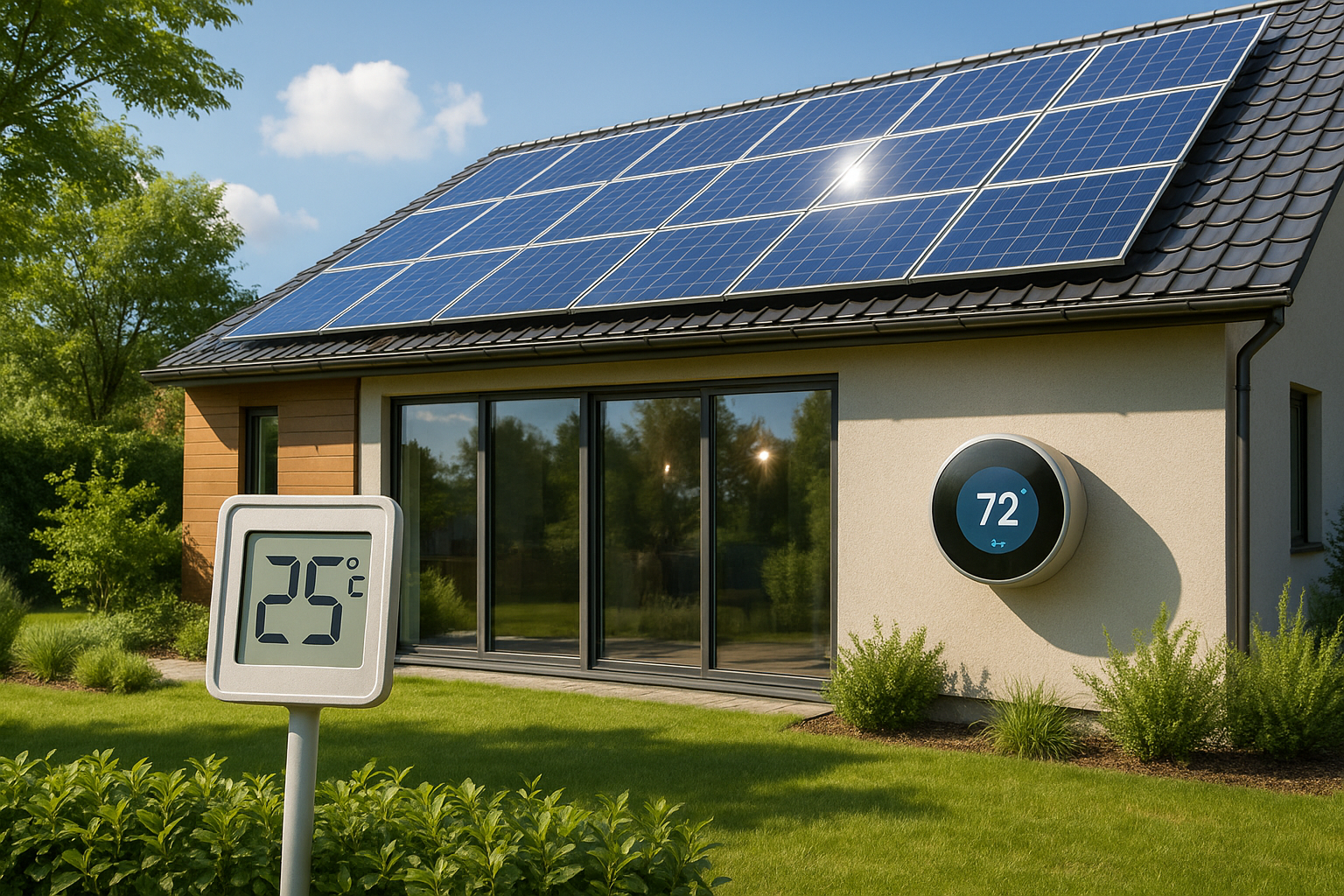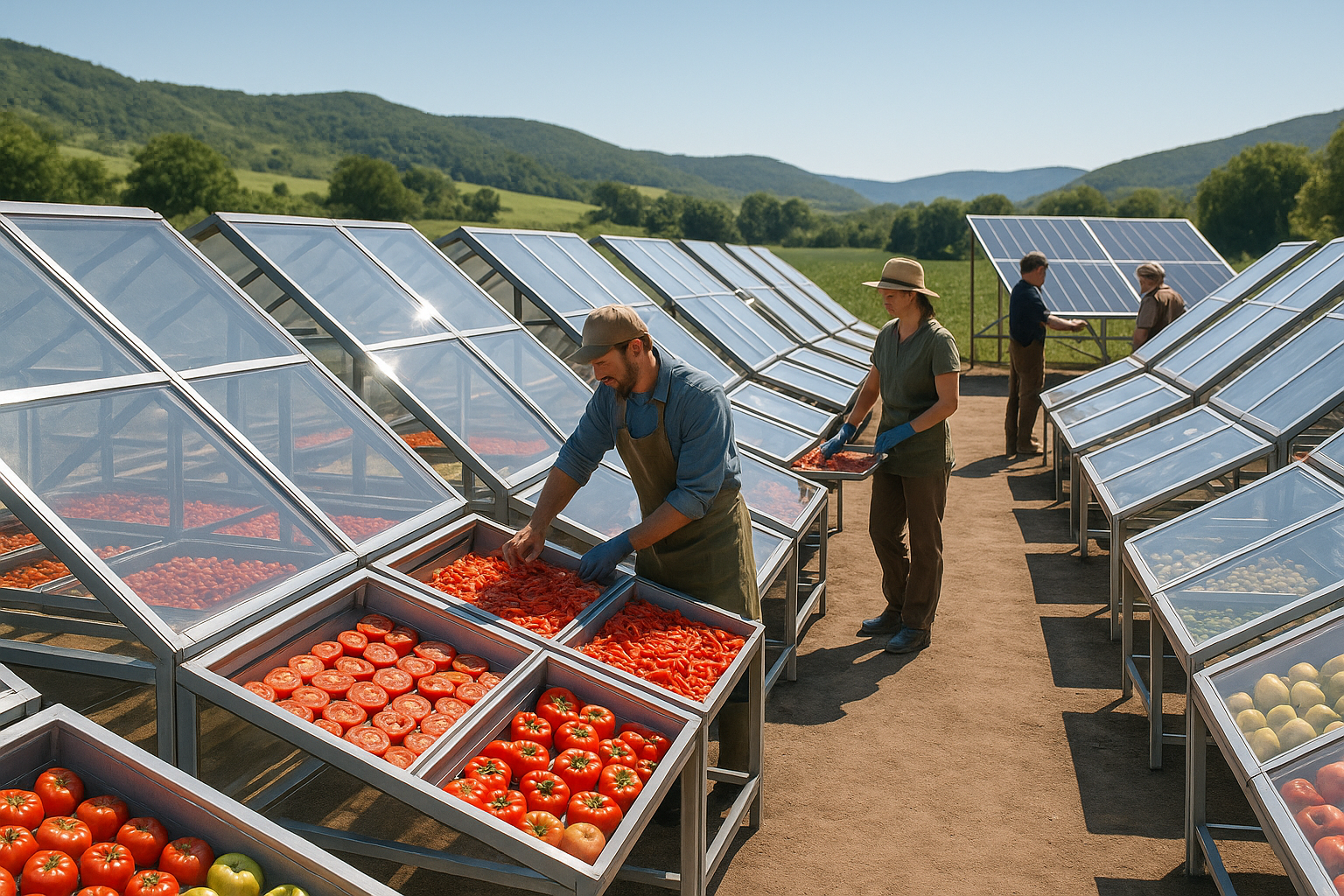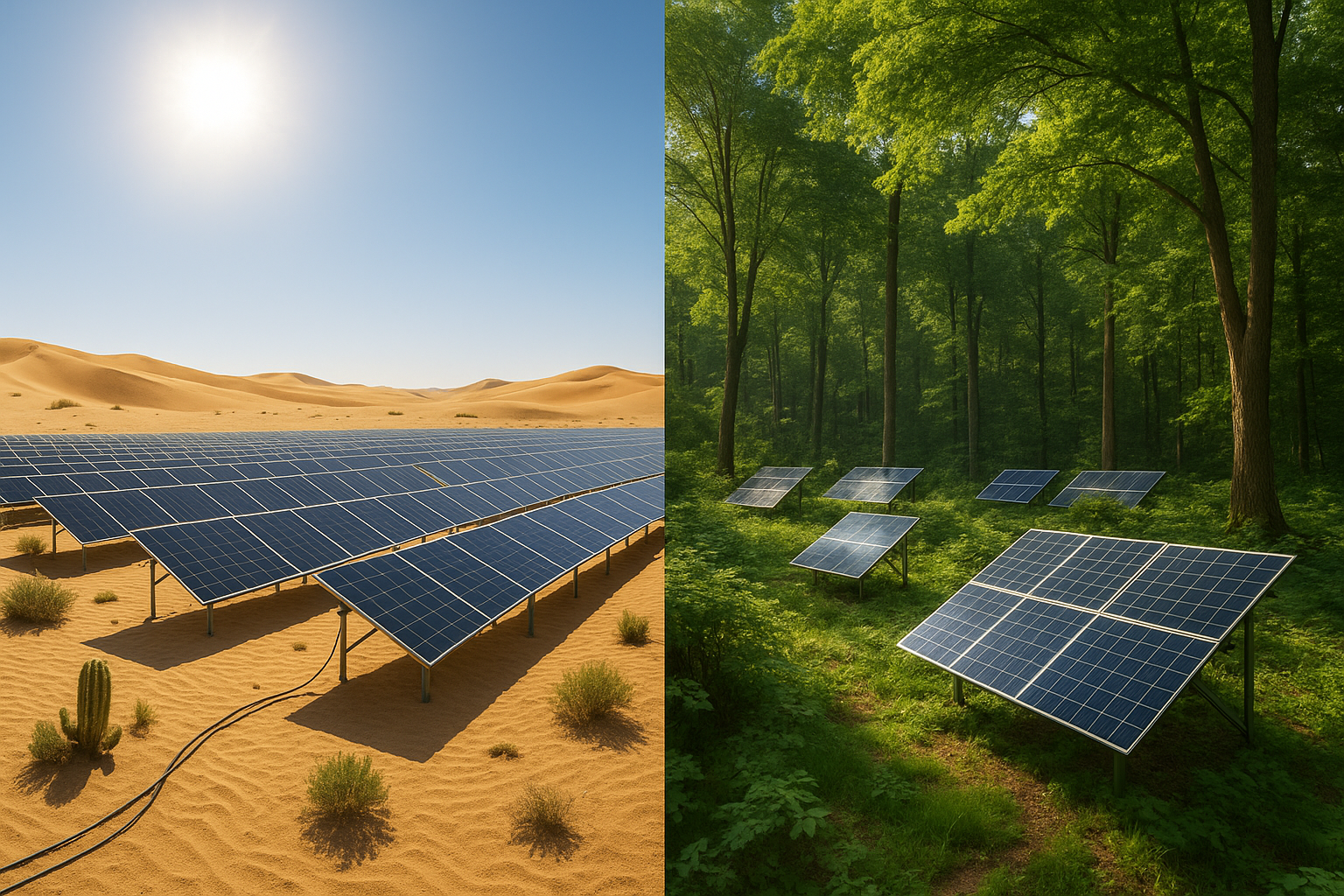In an era where sustainability is more than just a buzzword, harnessing the power of solar energy has become an essential step toward a greener future. ☀️ As the demand for clean energy solutions continues to rise, the quest for maximizing solar energy efficiency is more crucial than ever. At the heart of this pursuit lies a factor often overlooked: temperature control. Maintaining the optimal temperature for solar panels not only ensures peak performance but also extends their lifespan, leading to more savings and less environmental impact.
Imagine the sun-soaked rooftops of urban landscapes, where solar panels silently convert sunlight into electricity. While these panels are lauded for their ability to generate renewable energy, their efficiency can be significantly compromised by one simple factor: heat. Yes, heat is both a friend and a foe to solar panels. While it’s essential for generating electricity, excessive heat can decrease their efficiency, resulting in lower energy output. 🌡️
Why does temperature matter so much? Solar panels are most efficient within a specific temperature range. When temperatures soar, the efficiency of photovoltaic cells can drop, making it imperative to employ smart temperature management strategies. This is where the concept of optimal temperature controls comes into play, offering solutions to keep panels cool, efficient, and productive.
In this comprehensive guide, we’ll delve into the intricate relationship between temperature and solar energy efficiency. We’ll explore the science behind solar panel temperature regulation and unveil innovative methods to keep them running at their best. From understanding the physical properties of solar cells to implementing cutting-edge cooling technologies, this article is your roadmap to a more efficient solar setup.
First, we’ll examine how heat impacts the photovoltaic process, shedding light on why panels lose efficiency as temperatures rise. By understanding the underlying physics, you’ll gain a clearer picture of why managing panel temperature is not just beneficial but necessary. We’ll also touch upon the various types of solar panels available, as some are more susceptible to temperature fluctuations than others.
Next, we’ll explore practical strategies for temperature control. These range from simple, low-cost solutions to advanced technologies. For instance, proper panel installation techniques and strategic shading can mitigate heat buildup. 🌳 We’ll also look at the role of innovative cooling technologies like phase change materials and active cooling systems, which actively dissipate heat to maintain optimal panel temperature.
Furthermore, the article will discuss the importance of geographical considerations. Location plays a significant role in determining the effectiveness of temperature control measures. We’ll explore how different climates affect solar panel performance and how to adapt your strategies accordingly to achieve maximum efficiency.
We’ll also dive into the future of solar energy efficiency, exploring emerging trends and technologies that promise to revolutionize how we manage solar panel temperature. From smart coatings that reflect excess heat to AI-driven systems that dynamically adjust panel orientation, the possibilities are exciting and expansive. 🤖
Finally, we’ll provide a practical guide to implementing these strategies, ensuring you have the tools and knowledge to maximize your solar energy output while keeping costs in check. Whether you’re a homeowner looking to optimize your rooftop installation or a business seeking to enhance your solar farm’s efficiency, this guide has got you covered.
By the end of this article, you’ll not only understand the critical role temperature plays in solar energy efficiency but also how to effectively manage it. Embracing these insights and technologies will empower you to harness the full potential of solar energy, contributing to a more sustainable and cost-effective future.
Ready to unlock the secrets of solar efficiency? Let’s dive into the world of optimal temperature controls and discover how you can stay cool and safe while maximizing your solar energy gains. 🌍

Conclusion: Harnessing Solar Power Efficiently and Safely ☀️
As we journeyed through the depths of optimizing solar energy efficiency, it becomes clear that controlling temperature is crucial. From understanding the intricate balance between heat and solar panel performance to exploring advanced cooling technologies, each aspect plays a significant role in maximizing the benefits of solar energy.
Firstly, we delved into how temperature impacts solar panel efficiency. High temperatures, as we learned, can reduce the energy output of photovoltaic cells. This knowledge is essential for anyone looking to optimize their solar energy systems, whether on a small residential scale or a large industrial one.
Next, we explored innovative solutions that help manage panel temperatures. Technologies such as passive cooling systems, phase change materials, and liquid immersion cooling were highlighted as promising avenues. These innovations not only enhance efficiency but also extend the lifespan of solar panels, offering economic benefits alongside environmental ones.
Moreover, we discussed the importance of site selection and installation techniques. Properly angling panels and ensuring adequate airflow can make a significant difference in maintaining optimal operating temperatures. These seemingly minor considerations can lead to substantial improvements in overall energy efficiency.
We also addressed the role of smart technologies and monitoring systems. By employing IoT devices and advanced analytics, users can actively monitor temperature fluctuations and adjust operations accordingly. This proactive approach ensures that solar installations operate at peak efficiency while mitigating potential risks associated with overheating.
The importance of regular maintenance and cleaning was another crucial point. Dust and debris can exacerbate overheating problems, so keeping panels clean is vital for maintaining efficiency and safety.
In light of these discussions, the significance of optimizing solar energy through effective temperature control cannot be overstated. As global energy demands rise and environmental concerns intensify, harnessing solar power efficiently becomes not just an option but a necessity. The strategies and technologies explored here present a pathway to not only achieving energy sustainability but also contributing to a greener future.
We encourage you, dear readers, to reflect on the insights shared and consider how they might apply to your own solar energy systems. Whether you’re a homeowner, a business owner, or simply an enthusiast, there’s always room to enhance how we capture and use solar energy. 🌍
Feel free to share your thoughts and experiences in the comments below. Engaging in this dialogue can lead to new ideas and innovations, propelling us toward a more sustainable future. Also, don’t hesitate to share this article with friends and colleagues who might benefit from these insights.
Together, let’s strive to stay cool, stay safe, and harness the sun’s power more efficiently. Here’s to a brighter, cleaner future powered by solar energy! 🌞
This conclusion synthesizes the key points of the article and inspires the reader to engage further, whether by applying the concepts discussed or participating in a broader dialogue about solar energy efficiency.




